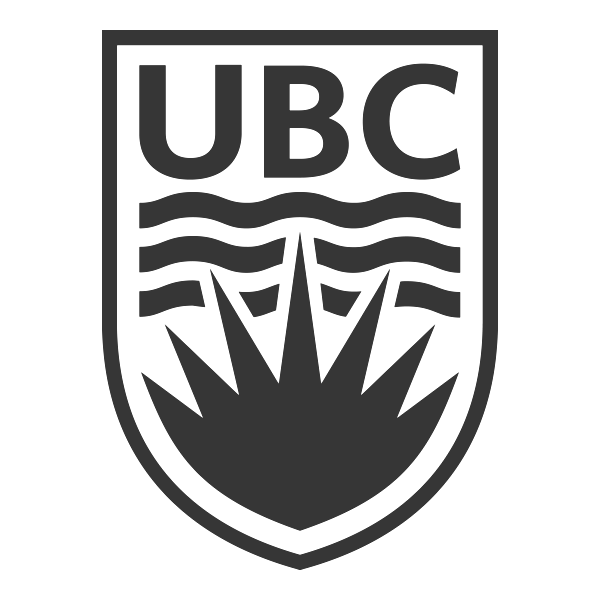Applications Research
Trusted by researchers around the world
Researchers from top institutions all over the world have used our cellulose nanocrystals in a dizzying array of applications. The links below have summaries of the published research. Contact us if you would like to learn more about BGB Ultra can be used in your application!
Published Research Applications
3D Printing
Cellulose nanocrystals provide structure and strength to 3D printed structures. Their strong thixotropic nature allows for free flowing through a printing head along with holding in place where it is printed. The following links show results of 3D printing testing.
Batteries
CNCs can be used in battery production by providing extremely high surface area for cathodes.
Biomedicine
Biomedicine is a rich area for research in CNCs. Their unique size, shape and safety profile are driving the interest in this field. One major application is tissue scaffolding. The crystals make structures where cells, be it bone or stem cells can grow. The CNCs are demonstrated to be absorbed by the body's natural processes after a few months, suggesting no long term side effects are likely. Medical excipients and ingredients in antimicrobial surfaces are two other important breakthroughs. The following links show the vast array of research in this field.
- Modification of small diameter vascular graft by heparin and nanocellulose
- Nanocellulose reinforced gellan-gum hydrogels as potential biological substitutes for annulus fibrous tissue regeneration
- Renal Specific RNAi Delivery by Fibrillar Nanoparticle Excipients
- Fibrillar pharmacology of functionalized nanocellulose
- Functionalized Nanocellulose Drives Neural Stem Cells toward Neuronal Differentiation
- Nanocellulose-Based Biomedical Scaffolds in Future Bioeconomy: A Techno-Legal Assessment of the State-of-the-Art
- 3D-Printed composite scaffolds based on poly(ε-caprolactone) filled with poly(glutamic acid)-modified cellulose nanocrystals for improved bone tissue regeneration
- Poly(Lactic Acid) and Nanocrystalline Cellulose Methacrylated Particles for Preparation of Cryogelated and 3D-Printed Scaffolds for Tissue Engineering
- Designing antimicrobial biomembranes via clustering amino-modified cellulose nanocrystals on silk fibroin β-sheets
- Comparison of Autografts and Biodegradable 3D-Printed Composite Scaffolds with Osteoconductive Properties for Tissue Regeneration in Bone Tuberculosis
- Mechanical Optimization and Characterization of Injectable Cellulose-Reinforced Calcium Phosphate Bone Cements
- Chemical Modification of Nanocrystalline Cellulose for Manufacturing of Osteoconductive Composite Materials
- In Vitro and in Vivo Analyses of the Effects of Source, Length, and Charge on the Cytotoxicity and Immunocompatibility of Cellulose Nanocrystals
- Advances in Digital Light Processing (DLP) Bioprinting: A Review of Biomaterials and Its Applications, Innovations, Challenges, and Future Perspectives
Characterization
Since CNCs are relatively new materials, there is a lot of research in the measurement of these particles and how to predict performance in established products. These publications explore this topic.
- Benchmarking Cellulose Nanocrystals: From the Laboratory to Industrial Production
- Determination of nanoparticle size using Rayleigh approximation and Mie theory
- Determining the complex refractive index of cellulose nanocrystals by combination of Beer-Lambert and immersion matching methods
- Production routes to tailor the performance of cellulose nanocrystals
- Benchmarking Cellulose Nanocrystals Part II: New Industrially Produced Materials
Coatings
A major push in coatings development is to replicate the excellent performance of fossil fuels without the health, safety and environmental hazards that come along with them. These studies show progress on this front.
- Enabling zero added-coalescent waterborne acrylic coatings with cellulose nanocrystals
- Strength and Moisture-Related Properties of Filter Paper Coated with Nanocellulose
- Performance of Advanced Waterborne Wood Coatings Reinforced with Cellulose Nanocrystals
- Incorporating cellulose nanocrystals into waterborne acrylic coatings towards eco-friendly formulations
Comparison
Nanocellulose in general is a very active field of research. Scientists are testing new production methods and raw materials need established nanocellulose to compare it to. These papers use BGB Ultra as the established CNC that they are measuring their performance against.
- Extraction and Characterization of Nanocrystalline Cellulose from Oil Palm Empty Fruit Bunch and its Potential as Adsorbent for Dye Removal
- Isolation and Surface Modification of Nanocellulose: Necessity of Enzymes over Chemicals
- Enzymatically-Mediated Co-Production of Cellulose Nanocrystals and Fermentable Sugars
- Sustainable stabilization of oil in water emulsions by cellulose nanocrystals synthesized from deep eutectic solvents
- Emulsion Stabilization with Functionalized Cellulose Nanoparticles Fabricated Using Deep Eutectic Solvents
- Fabrication of regenerated cellulose nanoparticles by mechanical disintegration of cellulose after dissolution and regeneration from a deep eutectic solvent
- Functionalized cellulose nanoparticles in the stabilization of oil-in-water emulsions : bio-based approach to chemical oil spill response
- Cellulose Nanocrystals: From Classical Hydrolysis to the Use of Deep Eutectic Solvents
- Waste paper: An underutilized but promising source for nanocellulose mining
- Characterization of nanocellulose production by strains of Komagataeibacter sp. isolated from organic waste and Kombucha
- Preparation and Surface Functionalization of Carboxylated Cellulose Nanocrystals
- Biorefinery aspects for cost-effective production of nanocellulose and high value-added biocomposites
- Recent Progress in Production Methods for Cellulose Nanocrystals: Leading to More Sustainable Processes
- Industrial-scale fabrication and functionalization of nanocellulose
- Cellulose Nanocrystals from Sugar Cane Bagasse Using Organic and/or Inorganic Acids: Techno-Economic Analysis and Life Cycle Assessment
- Production routes to tune cellulose nanocrystal properties and their performance at high temperatures
- Using a systematic review to develop a cellulose nanocrystals production framework for use as a design baseline and optimization tool
- Production of a nascent cellulosic material from vegetable waste: Synthesis, characterization, functional properties, and its potency for a cationic dye removal
- Process design for the obtention of Stipa Ichu celullose nanofibers
- Recent advances in sustainable preparation of cellulose nanocrystals via solid acid hydrolysis: A mini-review
- Production of nanocellulose from supramolecularly delignified wood
- ASSESSMENT OF FUNGI GROWTH ON CELLULOSE NANOFIBERS
- High-yield nanocellulose from supramolecular chemistry-driven delignified softwood
- Electrocatalytic TEMPO-mediated oxidation of cellulose nanocrystals: gaining a mechanistic understanding
- TEMPO-oxidized spent coffee grounds-derived cellulose nanofibers (TCCNs): physicochemical characterization and rheological properties
Composites
CNC inclusion in composites is a well-researched field. Typically, less than 1% inclusion of CNC increases the strength, stiffness and barrier properties of the composite. Too high of CNC loading usually depletes these benefits. Along with dosage, chemical compatibility of the CNCs with the rest of the components are a key to success.
- Obtaining and characterization of polycaprolactone with nanocellulose microcomposite
- Electrospun Nanofibers Made of Silver Nanoparticles, Cellulose Nanocrystals, and Polyacrylonitrile as Substrates for Surface-Enhanced Raman Scattering
- Nanocrystalline Cellulose/Polyvinylpyrrolidone Fibrous Composites Prepared by Electrospinning and Thermal Crosslinking
- PGlu-Modified Nanocrystalline Cellulose Improves Mechanical Properties, Biocompatibility, and Mineralization of Polyester-Based Composites
- Composite Biomaterials Based on Poly(L-Lactic Acid) and Functionalized Cellulose Nanocrystals
- Level enhancement of sound transmission class of fiber reinforced polyester composite by adding nanocellulose
- Effect of Cellulose Nanocrystals on the Mechanical Properties of Polymeric Composites
- Characterization of nanocellulose and barium hexaferrite reinforced silicone rubber composites
- Mechanical and Water Resistance Performance of Physically Cross-Linked Poly(Vinyl Alcohol) Composite with Poly(Dopamine) Modified Cellulose Nanocrystals
- Effect of cellulose nano crystal and graphene nano platelets on thermal properties of unsaturated polyester resin reinforced kenaf fibre biocomposites
- Processing and characterization of nanocellulose composites: The leap from poly (lactic acid) to polyamide 6
- Mechanical and physical properties of unsaturated polyester reinforced kenaf core fiber with hybrid cellulose nanocrystal (CNC) and graphene Nanoplatelet(GNP) nanofillers
- Cellulose Nano Crystal/Graphene Nano Platelets Hybrid Nanofillers reinforced Polylactic Acid Biocomposites: Mechanical and Morphological Properties
- Robust mechanical and water responsive mechanically adaptive property of physically cross-linked sustainable nanocellulose composites
- Performance analysis of nanocellulose and barium hexaferrite-based silicon rubber composite
- Thermal Properties of Unsaturated Polyester Reinforced Kenaf Core Fiber with Hybrid Nanofillers of Cellulose Nanocrystal and Graphene Nanoplatelet
- Effect of Polydopamine Coating of Cellulose Nanocrystals on Performance of PCL/PLA Bio-Nanocomposites
- Engineering Poly(Lactic Acid)/Cellulose Nanocrystal Composites: A Comparative Review of Preparation Strategies and their Influence on Structure-Property Relationships
Concrete
Concrete admixtures is one of the highest potential applications for cellulose nanocrystals. Small amounts of CNC can greatly improve the strength and permeability of hardened cement pastes. This can help to make concrete structures last much longer and make possible lower carbon dioxide emitting concretes. The following studies show the research in this area.
- EFFECTS ON RHEOLOGY AND HYDRATION OF THE ADDITION OF CELLULOSE NANOCRYSTALS (CNC) IN PORTLAND CEMENT PASTES
- The Influence of Cellulose Nanocrystals on the Hydration and Flexural Strength of Portland Cement Pastes
- Rheological impact of using cellulose nanocrystals (CNC) in cement pastes
- THE INFLUENCE OF CELLULOSE NANOCRYSTALS ON PERFORMANCE AND TRANSPORT PROPERTIES OF CEMENTITIOUS MATERIALS AND GYPSUM
- Mechanical behaviour of masonry assemblages built with mortar containing anti-freeze admixtures subject to sub-freezing curing temperatures
- DRYING BEHAVIOR OF 3D PRINTED CEMENTITIOUS PASTES CONTAINING CELLULOSE NANOCRYSTALS
- Interfacial interactions and reinforcing mechanisms of cellulose and chitin nanomaterials and starch derivatives for cement and concrete strength and durability enhancement: A review
- Self-Healing Efficiency of Cementitous Mortar Using Different Bacteria Protection Methods and Mineral Precursors
- Identification of Likely Alternative Supplementary Cementitious Materials in California: A Review of Supplies, Technical Performance in Concrete, Economic, and Climatic Considerations
- Effects of Antifreeze Admixtures on Masonry Performance at Subfreezing Temperatures
Drilling Fluids
CNCs are ideally suited for water based drilling fluid applications. Their unique rheological properties and their interaction with bentonite yield excellent performance for this demanding application. This research shows that CNCs can be used to make oil extraction safer and more environmentally responsible.
- Surface-Chemistry-Tuned Cellulose Nanocrystals in a Bentonite Suspension for Water-Based Drilling Fluids
- Cellulose Nanocrystal–Polyelectrolyte Hybrids for Bentonite Water-Based Drilling Fluids
- Thermothickening Drilling Fluids Containing Bentonite and Dual-Functionalized Cellulose Nanocrystals
- Overcoming Salt Contamination of Bentonite Water-Based Drilling Fluids with Blended Dual-Functionalized Cellulose Nanocrystals
- Magnetically Tunable Drilling Fluids Based on Water, Bentonite, and Functionalized Cellulose Nanocrystals
Films
Like in composites, CNCs can greatly improve performance of films with relatively small (<1%) loading. Common benefits include improved strength, hardness as well as improved barrier properties. CNCs help bio-based films perform as well as petrochemical based films. These studies show the wide array of research being done on films.
- Cationic surface modification of cellulose nanocrystals: Toward tailoring dispersion and interface in carboxymethyl cellulose films
- Hybrid solar cells based on nanocellulose and titania nanoparticles
- Tunable d-Limonene Permeability in Starch-Based Nanocomposite Films Reinforced by Cellulose Nanocrystals
- Characterization of cyclic olefin copolymer‐coated chitosan bilayer films containing nanocellulose and grape seed extract
- Development of Chitosan and Polycaprolactone based active bilayer films enhanced with nanocellulose and grape seed extract
- The effects of chitosan- and polycaprolactone-based bilayer films incorporated with grape seed extract and nanocellulose on the quality of chicken breast fillets
- Properties of Solvent Cast Polycaprolactone Films Containing Pomegranate Seed Oil Stabilized with Nanocellulose
- Functionalization of LC molecular films with nanocrystalline cellulose: A study of the self-assembly processes and molecular stability
- Active whey protein isolate films including bergamot oil emulsion stabilized by nanocellulose
- Fabrication of κ‐carrageenan and whey protein isolate‐based films reinforced with nanocellulose: optimization via RSM
- Active Chitosan/Polycaprolactone Bilayer Films Including D-Limonene and Nanocellulose
- Development of chitosan and polycaprolactone based trilayer biocomposite films for food packaging applications
- Surface characterization of nanocomposite Langmuir films based on liquid crystals and cellulose nanocrystals
- Fabrication of Translucid Gold-Nanocellulose Electrodes and Their Potential Application as Hydrogen Peroxide Sensor
- CARACTERIZAÇÃO REOLÓGICA E MORFOLÓGICA DENANOCELULOSE DA CASCA DE CACAU PARA APLICAÇÃO NO DESENVOLVIMENTO DE FILMES BIODEGRADÁVEIS
- High-Performance Biocomposite Polyvinyl Alcohol (PVA) Films Modified with Cellulose Nanocrystals (CNCs), Tannic Acid (TA), and Chitosan (CS) for Food Packaging
- Composition of cellulose nanocrystals and carboxymethyl cellulose
- Starch and whey protein isolate films including an aroma compound stabilized by nanocellulose
- Long-range order in nanocellulose films and coatings for next generation materials
- Recyclable and biodegradable smart electronic circuits on flexible substrates
- Uniaxial orientation of cellulose nanocrystals by zone-casting technique
- The anchoring effect and cooperative interactions in 5CB/CNC molecular films
- Fluorescent composite films of oriented cellulose nanocrystals with fluorescein
Flotation
Although not as thoroughly studied as other applications, CNC has been tested as a flotation aid with the aim to make the process selective in removing targeted compounds. These studies show the current state of this work.
Food
Cellulose nanocrystals can be used in food products in the same way as microcrystalline cellulose and other cellulose derivatives. They add structure and viscosity to foods.
Fuel Cells
The interest in CNCs for fuel cells come in proton conductivity membranes, where the existing construction materials are expensive and lack some key performance measures. CNC can act as the membrane or as a structure where other proton conductors can be deposited. These papers show examples of each application.
- Comparison of structural, thermal and proton conductivity properties of micro- and nanocelluloses
- Proton conductivity and proton dynamics in nanocrystalline cellulose functionalized with imidazole
- The kinetics of thermal processes in imidazole-doped nanocrystalline cellulose solid proton conductor
- Solid electrolytes based on cellulose nanocrystals with protic ionic liquid for next-generation fuel cells
- Exploring Enhanced Oxygen Reduction Reactions: A Study on Nanocellulose, Dopamine, and Cobalt Complex-Derived Non-Precious Electrocatalyst
Heat Transfer Fluids
Nanofluids are functional fluids with nanoparticles suspended in them. These papers show research in using BGB Ultra in heat transfer fluids. The researchers are showing improved heat transfer with the addition of CNCs to the fluid. This can make any process where heat transfer is required more efficient and economical. In the case of machine working fluids, the researchers report lower cutting temperatures and longer tool life, both important performance considerations.
- Investigation on effective thermal conductivity and relative viscosity of cellulose nanocrystal as a nanofluidic thermal transport through a combined experimental – Statistical approach by using Response Surface Methodology
- Thermophysical properties measurement of nano cellulose in ethylene glycol/water
- Multi-objective optimization on the machining parameters for bio-inspired nanocoolant
- Thermal analysis of cellulose nanocrystal-ethylene glycol nanofluid coolant
- A review on preparation of nanocellulose for new green working fluid in heat transfer application
- Experimental Studies on Thermo-Physical Properties of Nanocellulose–Aqueous Ethylene Glycol Nanofluids
- Experimental investigation of stability and thermal properties of nanocellulose-water nanofluid
- Evaluation of Specific Heat Capacity and Density for Cellulose Nanocrystal-based Nanofluid
- Analysis of efficiency enhancement of flat plate solar collector using crystal nano-cellulose (CNC) nanofluids
- Enhancing Heat Transfer in Compact Automotive Engines using Hybrid Nano Coolants
- Numerical study of a combined Photovoltaic thermal system using cellulose Nanocrystal (CNC) Nano-fluid
- Enhancing Thermal Properties: A Comprehensive Study on Cellulose Nanocrystal Nanofluids
- Enhancing Thermal Conductivity and Heat Transfer Performance With Nanocellulose-Based Nanofluids: A comprehensive Study
Inks
This paper shows that a water based ink can be made using CNCs and colloidal gold to convert visible light to heat. This could replace existing methods to make these materials that are complicated and environmentally hazardous.
Lubrication
Nanofluids are functional fluids with nanoparticles suspended in them. In the case of machine working fluids, the researchers report lower cutting temperatures and longer tool life, both important performance considerations.
- Thermal analysis of SUS 304 stainless steel using ethylene glycol/nanocellulose-based nanofluid coolant
- An experimental study on characterization and properties of nano lubricant containing Cellulose Nanocrystal (CNC)
- Statistical approach for prediction of thermal properties of CNC and CNC-CuO nanolubricant using Response Surface Methodology (RSM)
Measurement
These papers describe the use of BGB Ultra in the construction of sensors of particular interest. In this case, CNCs are useful in providing large surface area to deposit sensing molecules.
- Microcrystalline cellulose for the dispersive solid-phase microextraction and sensitive determination of chromium in water using electrothermal atomic absorption spectrometry
- Platinum Nanoparticle Decorated Poly(diallyldimethylammonium chloride)/Cellulose Nanocrystal Nanohybrid for Electrochemical Sensing of Dopamine
- In-situ synthesis of Pt nanoparticles/reduced graphene oxide/cellulose nanohybrid for nonenzymatic glucose sensing
Membranes
The strength and large surface area of CNCs make them interesting candidates for components of membranes. These paper show BGB Ultra tested in this application.
Smart Materials
Smart materials are ones that change or maintain a state based on a desired outcome. A material that changes state near room temperature can help to maintain a steady temperature without adding external heat or cooling. Another example is a material that is liquid at room temperature and gel at body temperature can be used as injectable therapeutic treatments.
- Development of stimuli-responsive cellulose nanocrystals hydrogels for smart applications
- Facile fabrication of shape-stabilized polyethylene glycol/cellulose nanocrystal phase change materials based on thiol-ene click chemistry and solvent exchange
- Waterproof Phase Change Material with a Facilely Incorporated Cellulose Nanocrystal/Poly(N-isopropylacrylamide) Network for All-Weather Outdoor Thermal Energy Storage
- A Wearable Strain Sensor Based on Electroconductive Hydrogel Composites for Human Motion Detection
Surface Modification
One of the unique features of CNCs are their extremely high surface area. This means that changing the surface chemistry of CNCs can fundamentally change their behavior. The most common treatment is one where the CNCs can become chemically compatible in polymer-based formulations, but other modifications are being tested. These papers show what has been tried and resulting performance changes of a variety of surface modifications.
- Functionalization of cellulose nanocrystals for advanced applications
- Grafting polycaprolactone diol onto cellulose nanocrystals via click chemistry: Enhancing thermal stability and hydrophobic property
- Flexible and Tough Cellulose Nanocrystal/Polycaprolactone Hybrid Aerogel Based on the Strategy of Macromolecule Cross-Linking via Click Chemistry
- Surface Modification for the Hydrophobization of Cellulose Nanocrystals Using Radiation-Induced Grafting
- Chemical modification of nanocrystalline cellulose for improved interfacial compatibility with poly(lactic acid)
- Aqueous bifunctionalization of cellulose nanocrystals through amino and alkyl silylation: functionalization, characterization, and performance of nanocrystals in quartz microflotation
Tribology
The use of cellulose nanocrystals in tribology is another example of a nanofluid application. These papers show that CNCs can be used to improve lubrication of engine oil. This could extend the life of engines and improve fuel efficiency of internal combustion engines.
- Study on friction and wear of Cellulose Nanocrystal (CNC) nanoparticle as lubricating additive in engine oil
- Hybrid Nanocellulose-Copper (II) Oxide as Engine Oil Additives for Tribological Behavior Improvement
- Enhancement of Tribological Behaviour and Thermal Properties of Hybrid Nanocellulose/Copper (II) Oxide Nanolubricant
- Graphene nanoplatelets–cellulose nanocrystals in engine oil for automotive applications
- Improving the thermophysical properties of hybrid nanocellulose-copper (II) oxide (CNC-CuO) as a lubricant additives: A novel nanolubricant for tribology application
- Enhancing stability and tribological applications using hybrid nanocellulose-copper (II) oxide (CNC-CuO) nanolubricant: An approach towards environmental sustainability
- Advancements in Cellulose for Eco-Friendly Lubricant Applications: A Review on Tribological Properties
Water Treatment
Water treatment is another application of CNCs. Like in other applications, the high surface area act as an ideal substrate for membranes or treatment chemicals. They are especially good for selective removal of low concentration, highly toxic chemicals.
- Poly-β-Cyclodextrin Functionalized Nanocellulose for Efficient Removal of Endocrine Disrupting Chemicals
- Cellulose nanocrystals: source, production and application as a coagulant for water purification
- Nanocrystalline Cellulose-Derived Doped Carbonaceous Material for Rapid Mineralization of Nitrophenols under Visible Light






